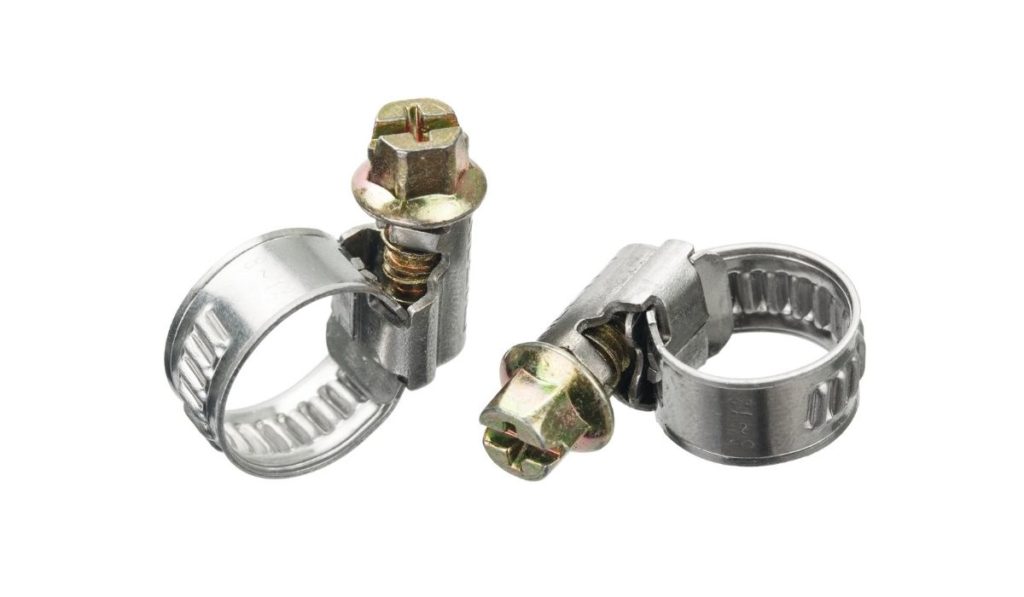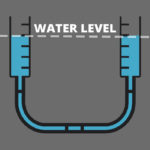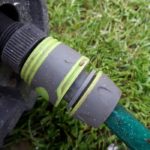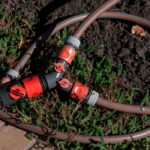If you want to use a hose, you need a hose clamp — it’s that simple. The clamp ensures that whatever gas or liquid is passing through the hose doesn’t leak out. The good thing about hose clamps is that you can use them at home for household connections, but you need to know how to use them properly.
To use a hose clamp, first expand the clamp until it’s big enough to fit over the hose. Then fit the expanded clamp over the hose, connect the hose to the target connection, and tighten the clamp over the hose. Hose clamps can provide a water-tight seal that’s also semi-permanent and reliable.
It’s also important to familiarize yourself with the different kinds of hose clamps available so that you can figure out which one is most suitable for your hose connection. Let’s look at the various types and how to properly use a hose clamp.
What Is a Hose Clamp?

The simple function of a hose clamp is to clamp a hose down and secure it over a fitting. Once a hose clamp is in place, it stops liquid from getting out of the hose connection. You can also call it a hose lock or hose clip.
A hose clamp can be used to secure liquids, chemicals, or gases, especially during transportation, and you can also attach this item to anything from bathroom fittings to car engines. Generally, hose clamps are versatile and can be used for both common and uncommon purposes.
There are four different hose clamp categories, and the best one depends on the kind of hose you’re clamping and its attachment at the end. The four hose clamp types are spring, ear, screw/band, and wire.
Also, hose clamps are made with different materials such as plastics, carbon steel, or stainless steel. Plastics are cheaper than metal, but they can only be used for specific applications, unlike metal. Both plastics and steel are corrosion resistant, but you need stainless steel hose clamps for heavy-duty applications due to their strength.
You can use hose clamps to secure different hoses, but you also need to know how they work. The process is pretty simple, and this is how you can use one of these items:
- Open the hose clamp by screwing it counterclockwise. Screw it open until it’s big enough to fit over the water hose.
- Slip the expanded clamp over the hose.
- Fit the hose into the object you want to connect it to.
- Screw the clamp in the clockwise direction to return it to its original size or until it’s tight enough to secure the hose to its connection.
Types of Hose Clamps
Of the four hose clamp categories, the screw/band hose clamp is the most popular. This is because they’re suitable for more domestic purposes. Major industries also use them.
This particular type of clamp has different versions as well, and we’ll be taking a look at some of them below:
- O Clips: This is the first on the list because it’s more economical than other hose clamps. O Clips are mostly used to set up hoses that carry liquid and air only. They are flexible, tamper-proof, and fit better on hoses than other types of clamps. A typical example of an O Clip hose clamp is the Selizo Hose Clamp (on Amazon).
- Jubilee Clips: Another name for this set of hose clamps is ‘worm drive’ hose clips. Jubilee clips were created in 1921 and were the first to be created in this category. They are known to be simple, effective, and versatile, and you can use them over any kind of fittings, from flexible fittings to solid ones. The GOSONO Mini Jubilee Fuel Hose Clamp (on Amazon) is a good example of jubilee clips.
- Heavy Duty Hose Clamps: As the name implies, heavy-duty hose clamps are used for heavy-duty hose fittings. They are the strongest hose clamps available and are perfect for complex and challenging applications. The Roadformer T-Bolt Hose Clamp (on Amazon) is a heavy-duty hose clamp.
Each of these hose clamps comes in various sizes and materials, so you can choose based on what you need and the kind of hose you have. If you don’t know which size or material to purchase, you can always reach out to a professional to guide you.
How Do You Open a Hose Clamp?
There are different ways to open a hose clamp, and you can pick whatever method works for you based on the available tools. We’ll also explain the risk(s) of using each method.
- A Standard Screwdriver: This removal method should only be used on connections that won’t break, such as a steel hose. If you’re using a plastic fitting, there’s a high chance that the screwdriver will break it.
Find the appropriate screwdriver size and force it into the space between the hose and the clamp, and then slowly pry the clamp open. Once the clamp is open, slip it down and remove the hose. Ensure the screwdriver doesn’t slip from your fingers as you work as you could harm yourself or damage the surrounding components of the hose.
- A Rotary Tool: You can use a small cutting disk along with this tool to cut the clamp. This method creates heat and sparks, so you shouldn’t use it with fuel hose connections to prevent fire outbreaks. Cut the clamp off the ear portion to ensure that no material from cutting is embedded in the plastic. Once you’ve cut the clamp, you can push it off the connection and remove the hose.
- Pliers: This method is the most recommended, but you’ll need specially designed pliers, like these ones (on Amazon). Once you cut the clamp, you can remove it and remove the hose from its connection.
To reinstall a hose, you’ll need a new replacement hose. You might also need to get a hose cutter, especially if you’ll do this more often. Cut the hose according to the appropriate length first.
Then you can place a new clamp on the hose before installing the hose. To make the installation easier (so that the hose slides easily onto the connection), you can use a tiny amount of rubber-safe silicone spray.
How to Care for a Hose Clamp

They might not look like it, but a hose clamp needs as much care as any other household item that you own. So, how can you take care of them?
- The first thing you have to do is ensure that you don’t over-tighten them. Doing this can lead to serious pressure issues when you aren’t expecting it.
- Hose clamps come in different dimensions, so you have to choose the one that fits your hose well. You might feel like a big clamp would better tighten the hose to its connection, which is sometimes the case. But in general, using a clamp that’s too big can be a safety hazard and even make the connection aesthetically displeasing.
- Whatever you do, ensure you get high-quality hose clamps. You want clamps that will last a long time and can maintain a solid connection.








